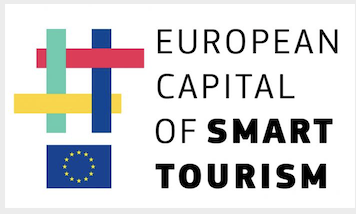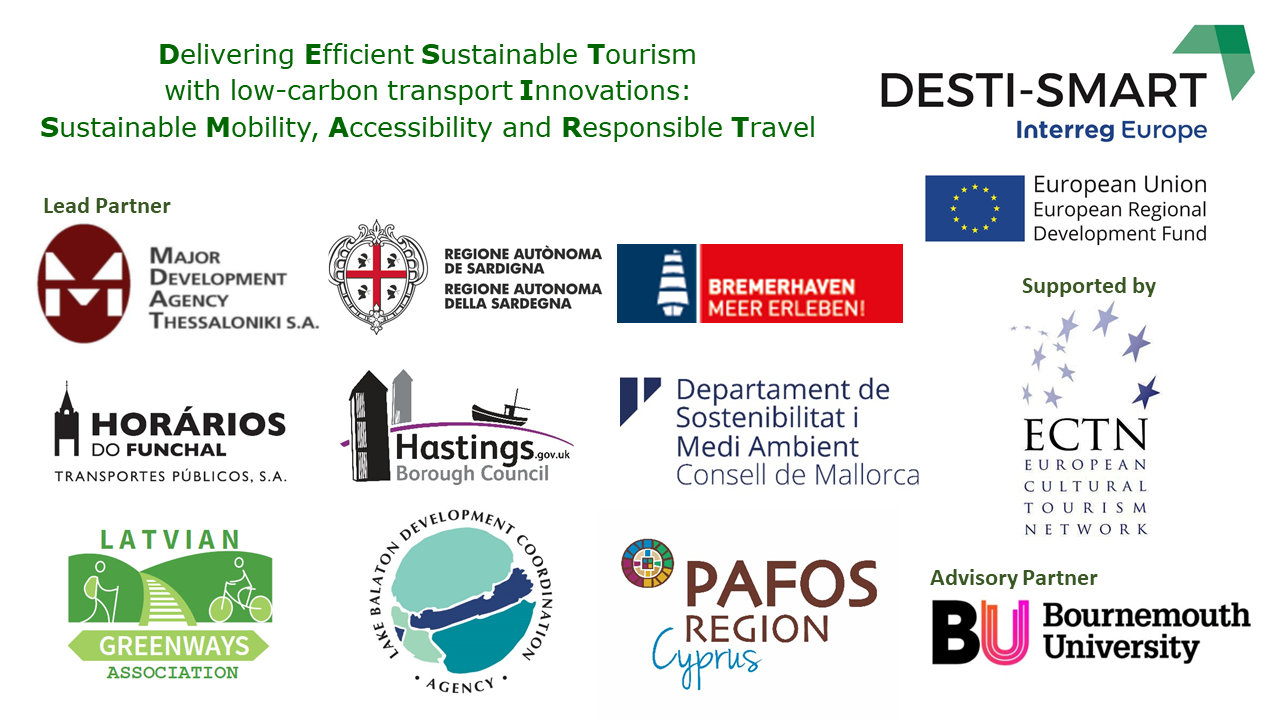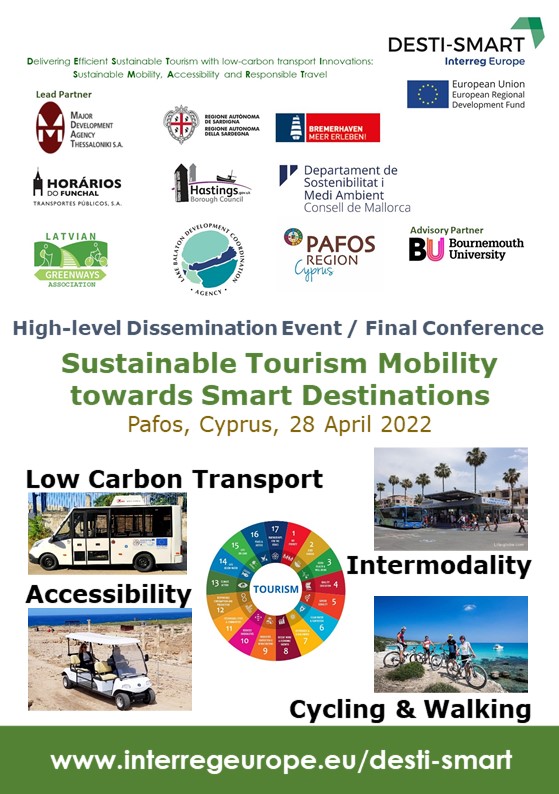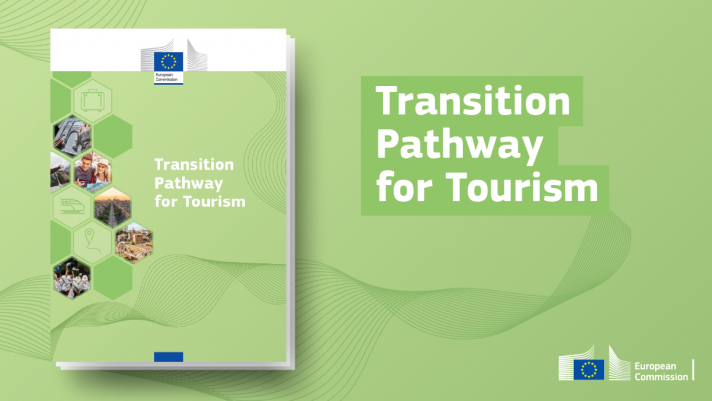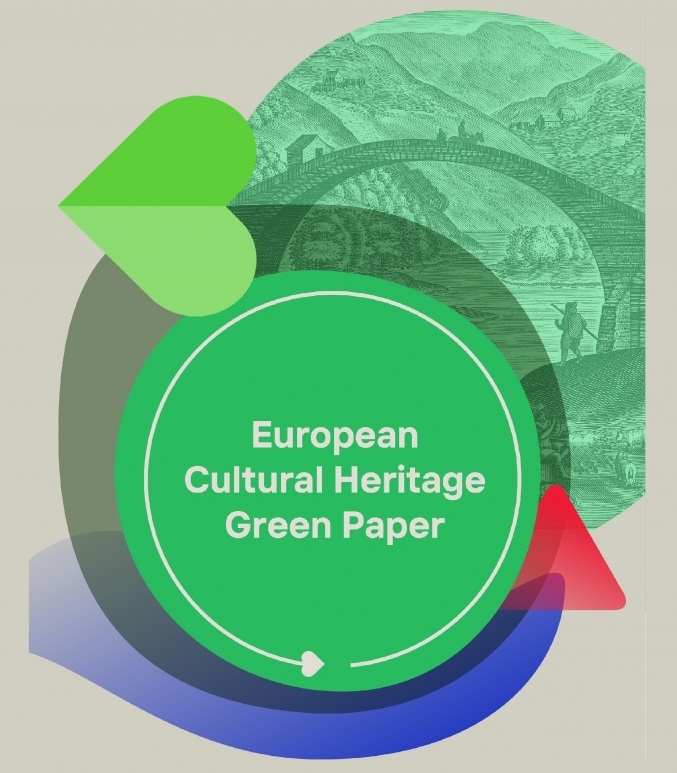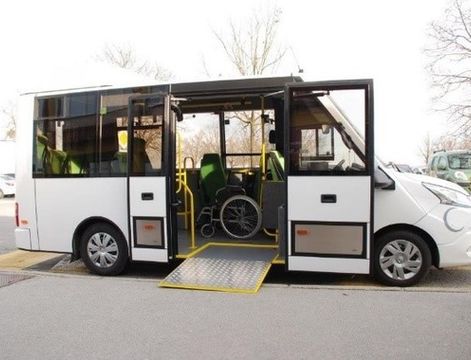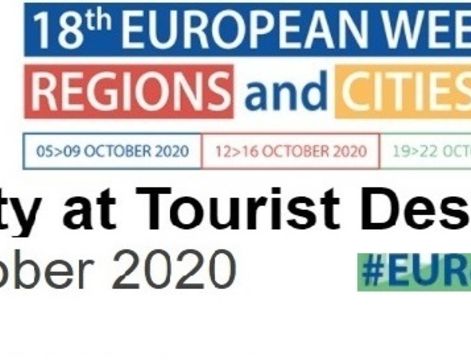The DESTI-SMART Partnership adopted the recommendations on 'Accelerating the shift to sustainable and smart mobility' in the 'European Cultural Heritage Green Paper' on 'Putting Europe’s shared heritage at the heart of the European Green Deal', launched in March 2021 by ICOMOS, Europa Nostra and the EIB Institute. This includes highly relevant advice on sustainable tourism mobility, as shown below.
Transport accounts for a quarter of the EU’s GHG emissions, and this amount is still growing. To achieve climate neutrality, the European Green Deal (EGD) calls for a 90% reduction in transport emissions by 2050. Achieving sustainable transport, the European Green observes, means putting users at the centre. Putting users first, however, also means engaging with the cultural and creative aspects of mobility. Addressing these cultural dimensions also addresses other elements of the mobility equation including tourism, urban planning, equitable access for all to a diversity of cultural activities and the right to move.
Before the COVID-19 pandemic, mass tourism had become a heavy burden to a number of historic cities as well as cultural and natural heritage sites. Venice is a striking example, where the twin threats of GHG intensive mass tourism and climate change-induced sea level rise have reached alarming levels. The EGD should embrace a new strategy for more sustainable and responsible tourism that combines measures to reduce the risks of mass tourism (including cruise industry) with efforts to reduce its carbon footprint.
Key Recommendations:
FOR POLI CY M A K E RS
̯ Foster the cultural dimension of commuting platforms and services by partnering with the culture sector to enhance the digital and bricks-and-mortar experience in public mobility services through cultural and heritage-related content and information sharing in order to boost transit use.
̯ Reduce congestion and pollution, especially in urban areas, by including strategies in sustainable urban mobility plans designed to safeguard the dense, walkable, mixed-use features of historic districts and promote such traditional settlement patterns in land use planning and peri-urban development.
̯ Work with culture and tourism stakeholders to emphasise sustainable tourism approaches that allow cultural destinations to generate positive economic and social benefits for local communities while reducing tourism’s carbon footprint
FOR HERITAGE OPERATORS
- Work with transport planners to include in the design of sustainable mobility solutions measurers to facilitate equitable access for all to a diversity of cultural activities, notably festivals, fairs, natural and cultural heritage sites and practices, while securing the right to move for all citizens.
- Reduce the GHGs emissions from cultural tourism and its contributing services, including by promoting lower-carbon itineraries, slow travel.
- Educate visitors about climate change, and support behavioural changes towards greener practices.





